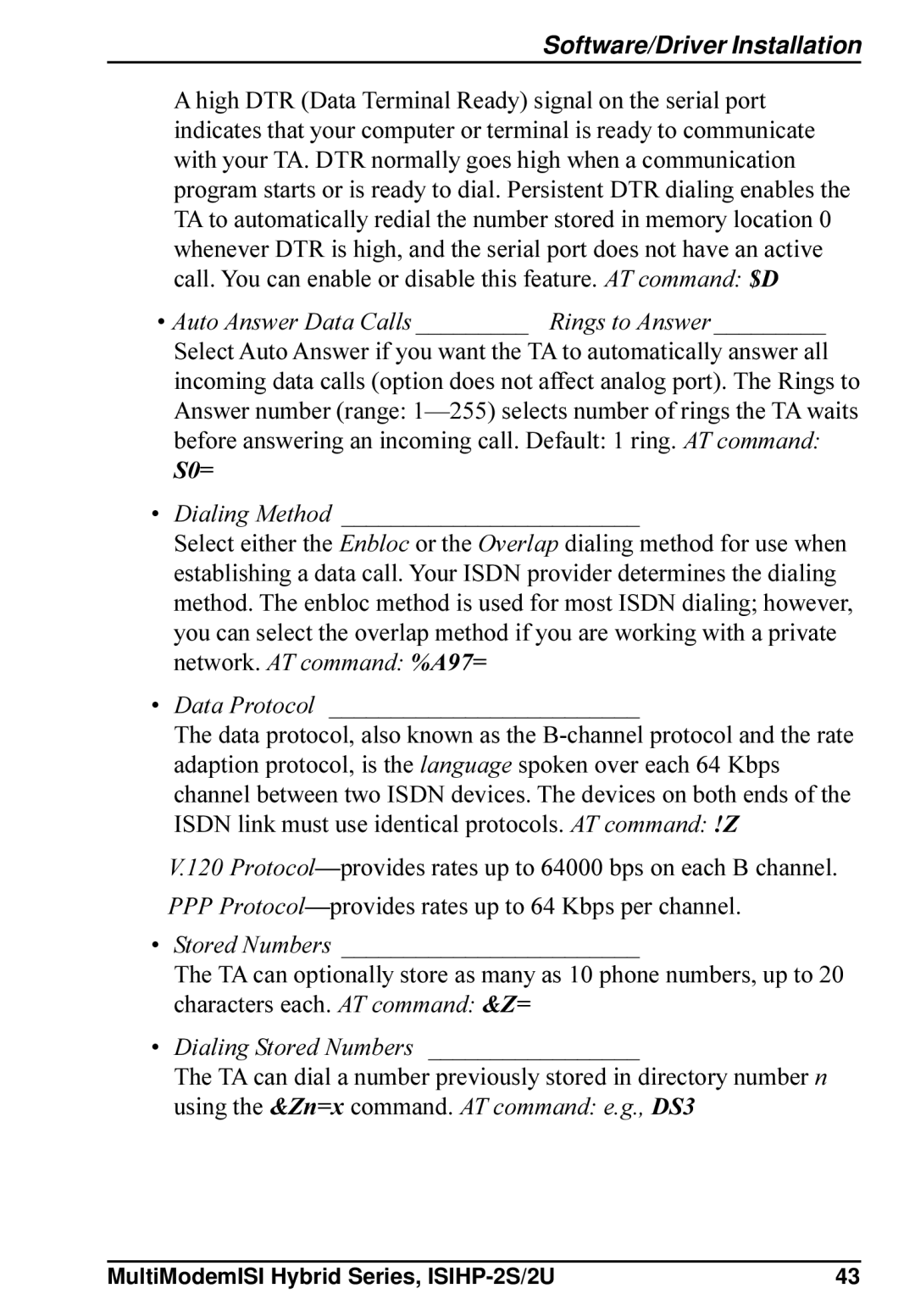
Software/Driver Installation
A high DTR (Data Terminal Ready) signal on the serial port indicates that your computer or terminal is ready to communicate with your TA. DTR normally goes high when a communication program starts or is ready to dial. Persistent DTR dialing enables the TA to automatically redial the number stored in memory location 0 whenever DTR is high, and the serial port does not have an active call. You can enable or disable this feature. AT command: $D
• Auto Answer Data Calls _________ Rings to Answer _________
Select Auto Answer if you want the TA to automatically answer all incoming data calls (option does not affect analog port). The Rings to Answer number (range:
S0=
•Dialing Method ________________________
Select either the Enbloc or the Overlap dialing method for use when establishing a data call. Your ISDN provider determines the dialing method. The enbloc method is used for most ISDN dialing; however, you can select the overlap method if you are working with a private network. AT command: %A97=
•Data Protocol _________________________
The data protocol, also known as the
V.120
PPP
•Stored Numbers ________________________
The TA can optionally store as many as 10 phone numbers, up to 20 characters each. AT command: &Z=
•Dialing Stored Numbers _________________
The TA can dial a number previously stored in directory number n using the &Zn=x command. AT command: e.g., DS3
MultiModemISI Hybrid Series, | 43 |
